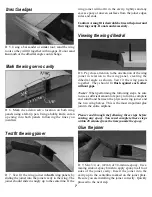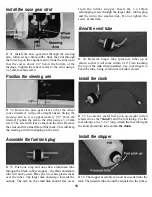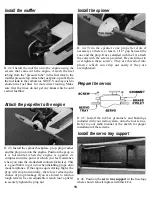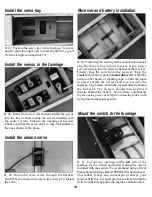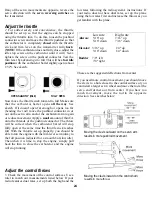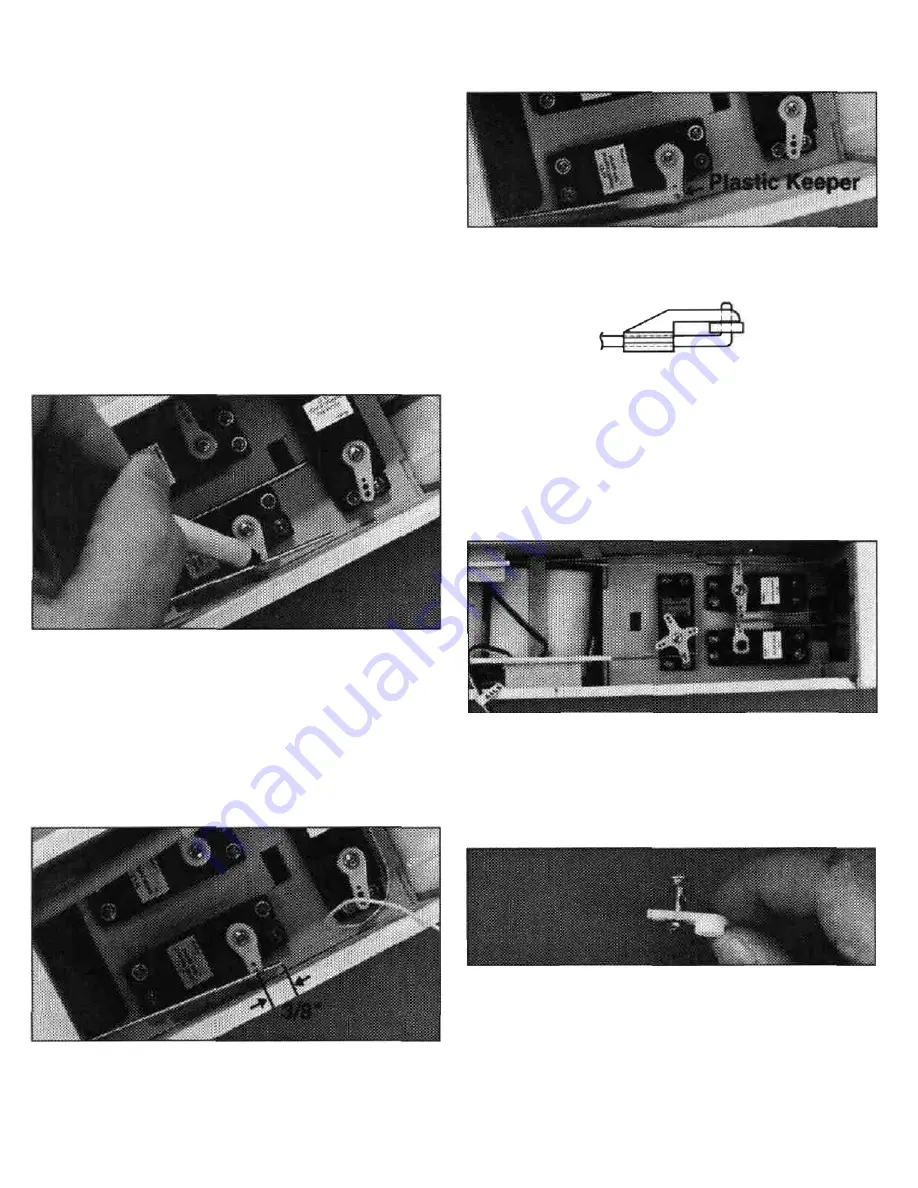
Center the servos with your radio
D 60. Turn the transmitter on and then the receiver.
Center all of the trim levers on the transmitter and
place the throttle stick at its midway position. Turn off
the receiver and then the transmitter. By doing this,
your servos will be at their centered (neutral) position
when you connect the pushrods. Refer to the following
photos and replace or trim the servo arms as shown. To
do this, simply remove the servo arms and reposition
them on the splined servo output shaft. Be sure to
reinstall the screws.
Connect the pushrods
D 63. Make a "L" bend at each mark. Remove the servo
arms from the servos. Attach the rods to the servo
arms. Use the plastic keepers as shown.
Mark the pushrods
0 61. Holding the elevator in its neutral position, mark
the pushrod wire where it crosses the servo arm using a
felt-tip pen. Next, hold the rudder at its neutral
position and mark the rudder pushrod wire in the
same manner.
Cut the pushrods
D 62. Cut off the pushrods approximately 3/8" past
the marks. Removing the pushrods will make this and
the next step easier.
Note: Install the rudder pushrod in the outside hole of
the servo arm. Install the elevator pushrod into the
middle or outer hole. You may need to enlarge the
holes slightly on the arms. A 5/64" drill bit works great
for this. Reattach the servo arms in the same position.
Do not connect the rudder yet.
Support the pushrods
D 64. Support the pushrods using leftover pieces of
plywood from the servo tray. This will keep the
pushrods from flexing during operation.
Attach the pushrod connector
D 65. Install a pushrod connector on the rudder servo
arm. For the steering pushrod, position the connector
in the innermost hole of the arm. You may need to
enlarge the hole using a 5/64" drill bit. Thread the nut
onto the connector. The connector must be able to
rotate in the servo arm, so do not over-tighten the nut.
Place a small drop of thin CA onto the threads
21

